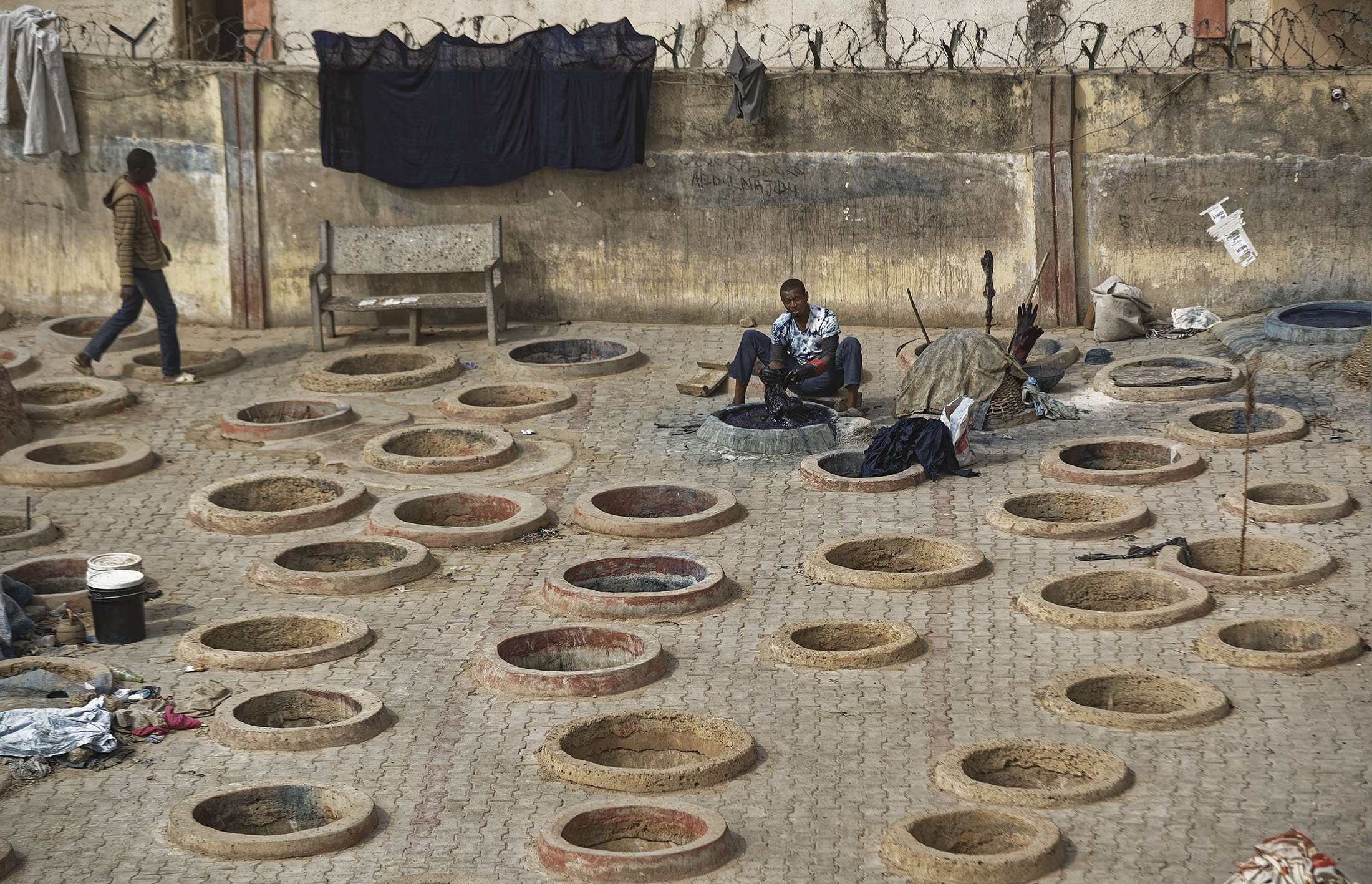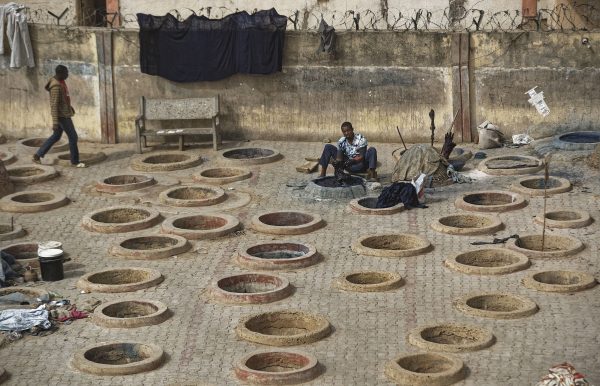Located in the heart of Nigeria lies the ancient city of Kano, renowned for its rich history and vibrant culture. One of Kano’s most fascinating and lesser-known treasures is its ancient Kano dye pits. These dye pits are over 500 years old, making them one of the oldest dyeing centres in Africa. In this article, we explore the Kano dye pits and uncover the secrets behind this traditional craft that has stood the test of time.
Read more about Did you know?
The History of Kano’s Dye Pits
The Kano dye pits, known locally as “Kofar Mata,” date back to the 15th century. Established during the reign of the King of Kano, the pits were integral to the city’s economy and culture. They are located near the Kano city wall, a historical marvel. The dye pits have been passed down through generations, with skills and techniques preserved and handed over from father to son, ensuring the continuity of this ancient tradition.
The Craft of Dyeing
The dyeing process in Kano’s pits is both an art and a science. It begins with preparing the dye primarily made from natural indigo. Indigo is a plant that produces a deep blue dye and has been used for centuries. In Kano, the indigo plants are harvested and processed to create the dye. The leaves of the indigo plant are soaked in water and allowed to ferment, producing a rich blue liquid.
Once the dye is ready, the cloth is prepared. The cloth used is typically cotton, which is abundant in Nigeria. The cotton fabric is first washed and then dipped into the dye pits. The dyeing process involves multiple dips, with the cloth being removed and allowed to oxidize between each dip. This process can take several days, with each dip deepening the fabric’s colour.
The final result is a beautiful, vibrant blue fabric known as “Kano cloth” or “adire.” The fabric is known for its rich colour and unique patterns, often created using a resist-dyeing technique. In resist dyeing, parts of the fabric are tied or covered to prevent them from absorbing the dye, resulting in intricate designs and patterns.
The Significance of the Dye Pits
The Kano dye pits are more than just an avenue to work; they are symbols of the city’s heritage and identity. The dyeing industry has played a crucial role in the economy of Kano, providing livelihoods for countless families over the centuries. The pits themselves are proof of the ingenuity and craftsmanship of the people of Kano.
Sign up for the Connect Nigeria daily newsletter
In addition to their economic significance, the dye pits hold cultural importance. The deep blue colour produced by the indigo dye is considered a symbol of wealth and status. Traditionally, the blue fabric was worn by royalty and the elite, signifying their high social standing. Even today, the indigo-dyed cloth from Kano is highly prized and continues to be used in traditional attire and ceremonies.
Challenges and Preservation
Despite their historical and cultural significance, the Kano dye pits face numerous challenges. The advent of modern dyeing techniques and synthetic dyes has posed a threat to the traditional craft. Synthetic dyes are cheaper and easier to use, leading to a decline in demand for natural indigo-dyed fabric.
Moreover, the dye pits themselves require constant maintenance. The pits are made from clay and need to be regularly repaired to prevent them from collapsing. The cost of maintaining the pits can be high, and with dwindling interest in the craft, there are concerns about the future of this ancient tradition.
Efforts are being made to preserve the dye pits and the traditional dyeing techniques. The Kano state government, along with various cultural organizations, has initiated programs to promote and protect the dye pits. These initiatives include workshops and training programs to educate the younger generation about the importance of dye pits and the craft of dyeing.
A Glimpse into the Past
Visiting the Kano dye pits is like stepping back in time. The sight of the craftsmen working in the pits, using the same methods and techniques that have been passed down through generations, is a reminder of the rich history and culture of Kano. The dye pits are a living museum, showcasing the skill and dedication of the artisans who keep this ancient tradition alive.
Register to attend the CN Business Mixer
Final Thoughts
The ancient dye pits of Kano are a remarkable part of Nigeria’s heritage. They stand as proof of the city’s history, culture, and craftsmanship. By preserving and promoting these dye pits, we can ensure that this ancient art continues to thrive for future generations to appreciate and cherish.
Got a suggestion? Contact us: [email protected]


